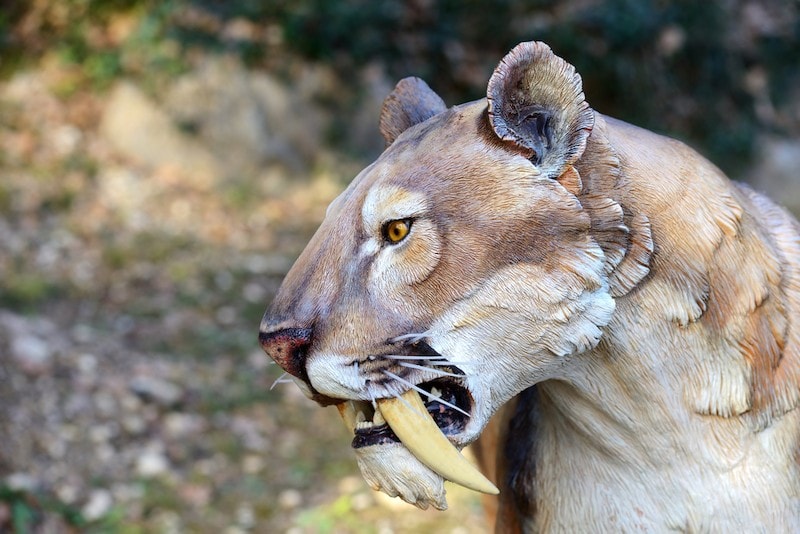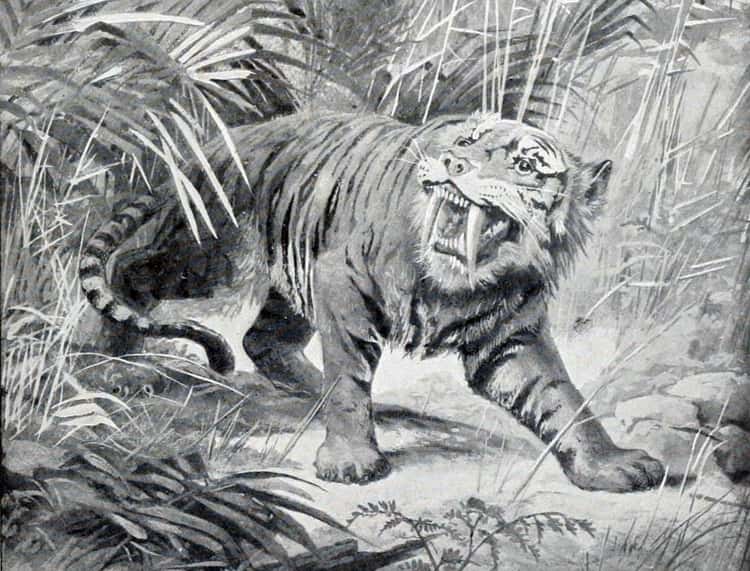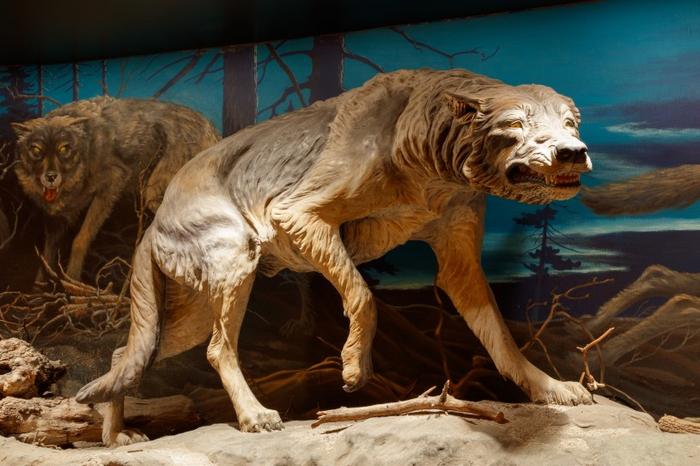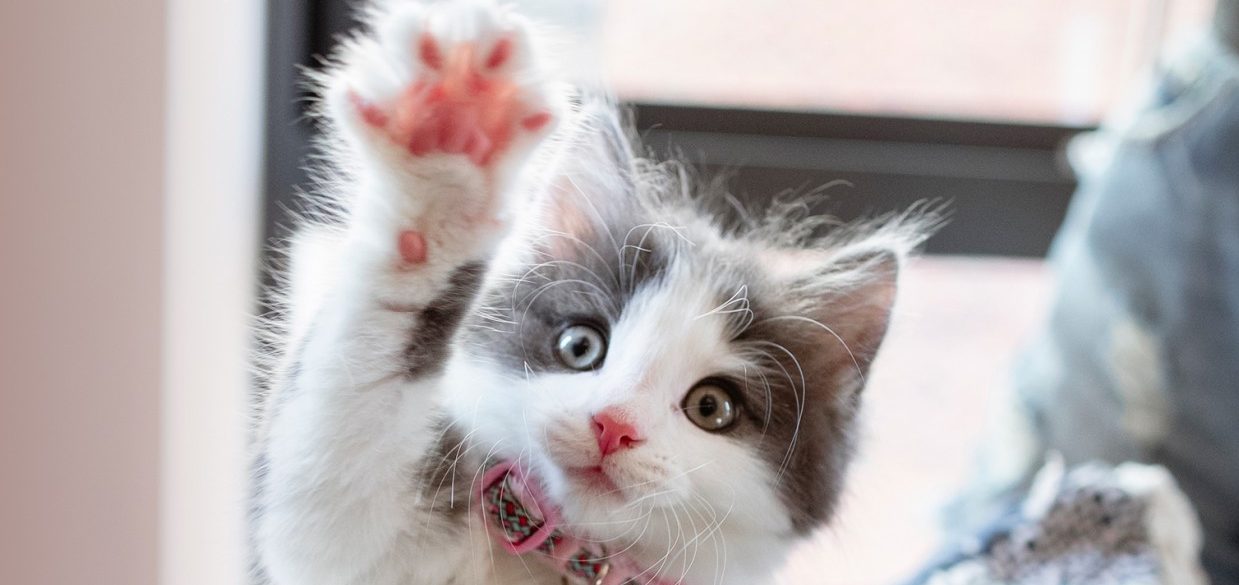Cats, with their enigmatic grace and ferocious beauty, have prowled the earth for millions of years, leaving an indelible mark on ecosystems worldwide. While modern-day felines such as lions, tigers, and domestic cats continue to captivate our imaginations, the annals of natural history also unveil a rich tapestry of extinct cat species. These majestic creatures, now consigned to the depths of time, once roamed diverse landscapes, shaping evolutionary pathways and contributing to the intricate web of life. By delving into the realm of these vanished felines, we unearth not only their formidable presence but also gain invaluable insights into the dynamic forces that have sculpted our planet.
In the vast annals of prehistory, one cannot overlook the formidable saber-toothed cats, iconic symbols of ancient predatory prowess. Among these apex predators, Smilodon stands out as a true titan of the Pleistocene era, its massive sabers striking fear into the hearts of prey and rival predators alike. With a robust build and formidable bite force, Smilodon ruled over the prehistoric landscapes of North and South America, embodying the apex predator archetype with unparalleled ferocity. Despite its extinction over 10,000 years ago, the legacy of Smilodon endures, immortalized in fossilized remains and the enduring fascination of scientists and enthusiasts alike.
The demise of these magnificent creatures remains shrouded in mystery, with theories ranging from climate change to human intervention. While the exact cause of their extinction may elude us, the legacy of these ancient felines persists in the rich tapestry of natural history. As we unravel the mysteries of the past and reconstruct the lives of these vanished predators, we gain a deeper appreciation for the intricate dance of life and death that has shaped our world.
The Pleistocene Pantheon: Diversity and Adaptation

The Pleistocene epoch, characterized by dramatic shifts in climate and geography, witnessed the rise and fall of a diverse array of megafauna, including an impressive roster of felids. Among the pantheon of Pleistocene cats, the American lion (Panthera atrox) stands as a formidable contender for apex predator status. Towering over its modern-day counterparts, the American lion roamed the ancient landscapes of North and South America, its thunderous roars echoing across the prehistoric savannas. With its robust build and powerful jaws, this regal predator commanded respect and instilled fear in the hearts of contemporaneous megafauna.
In addition to the American lion, the Pleistocene also hosted a myriad of other feline species, each uniquely adapted to its respective environment. From the stoutly built scimitar-toothed cat (Homotherium) to the sleek and agile dirk-toothed cat (Megantereon), these extinct felids exemplify the evolutionary ingenuity of the cat family. Through specialized dentition, limb proportions, and hunting strategies, these prehistoric predators carved out niches within the intricate tapestry of Pleistocene ecosystems, shaping the evolutionary trajectories of both predator and prey.
As we peer through the mists of time into the Pleistocene past, we encounter a menagerie of awe-inspiring felids, each a testament to the adaptive power of evolution. From the snow-cloaked expanses of the mammoth steppe to the lush jungles of prehistoric South America, these vanished cats prowled with silent grace, their presence woven into the fabric of ancient ecosystems. Through paleontological discoveries and cutting-edge research, we continue to unravel the secrets of these majestic predators, shedding light on their behaviors, interactions, and ultimately, their fateful encounter with extinction.
Echoes of the Ice Age: Survivors and Specters
The dawn of the Holocene epoch heralded a new chapter in Earth’s history, marked by the retreat of ice sheets and the emergence of modern ecosystems. Amidst this period of transition, some felid species persisted, adapting to changing environments and carving out niches alongside burgeoning human populations. Among these survivors stands the enigmatic Eurasian cave lion (Panthera spelaea), a relic of the Pleistocene whose ghostly presence haunts the caverns and crevices of prehistoric Europe and Asia. While you’re enjoying exploring these unique caves, don’t forget a great ring case to store your precious jewelry during your travels so you don’t lose it.
While the Eurasian cave lion ultimately succumbed to the pressures of a changing world, other felids thrived in the wake of extinction. The African lion (Panthera leo), a close relative of the American lion, expanded its range across the savannas and grasslands of Africa, cementing its status as the undisputed king of beasts. Similarly, the sleek and elusive leopard (Panthera pardus) carved out a niche in diverse habitats, from dense rainforests to arid deserts, its spotted coat serving as camouflage amidst the myriad hues of its surroundings. In order for you to rule and be able to progress through life, you can dedicate yourself to Korean skincare, which will make you feel younger and more beautiful, ready to overcome all the obstacles in front of you.
As we traverse the landscapes of the Holocene, we encounter a mosaic of feline diversity, each species a survivor in the ever-changing tapestry of life. From the regal lion to the elusive leopard, these modern-day felids carry within them echoes of their prehistoric ancestors, a reminder of the enduring legacy of the cat family. As we navigate the complexities of conservation and stewardship in the Anthropocene era, it is incumbent upon us to safeguard not only the future of these magnificent predators but also the rich tapestry of life that they represent. By understanding the different types, we also come to understand the differences between people, so we all have different types of skin and deal with it in different ways, which is why it is useful to use some excellent advice from the world-famous dermatologist, Cheyanne Mallas.
Tracing the Threads of Evolution: Genetics and Paleontology

Delving deeper into the enigmatic world of extinct cats, modern scientific techniques offer unprecedented insights into their evolutionary history. Through the convergence of genetics and paleontology, researchers unravel the intricate threads that bind past and present, shedding light on the genetic legacy of ancient felids. Recent advances in ancient DNA analysis have allowed scientists to extract genetic material from fossilized remains, providing a window into the genetic diversity and population dynamics of extinct species. Something like this is very interesting and you can even try it at home, using some of the excellent kitchen appliances you can extract DNA from some of the groceries yourself, and if one of your kitchen appliances is broken, you can take it to an appliance repair service in Washington DC.
By comparing the genomes of extinct cats to their modern-day counterparts, researchers can trace the evolutionary trajectories that shaped the diversity of the cat family. From the branching pathways of speciation to the genetic adaptations for specialized hunting strategies, these genetic analyses offer tantalizing glimpses into the evolutionary forces that drove the diversification of felids over millions of years. Through interdisciplinary collaboration and cutting-edge technology, scientists continue to unlock the secrets encoded within the genomes of extinct cats, illuminating the hidden chapters of their evolutionary saga. Technology has advanced in other areas of society as well, so today you can indulge in excellent treatments at a luxury spa in Toronto that offers you the best of the latest innovations in relaxation.
Adaptation and Extinction: Lessons from the Past
The annals of natural history are replete with tales of adaptation and extinction, with each species charting its own course amidst the ebb and flow of environmental change. Extinct cats serve as poignant reminders of the delicate balance between adaptation and extinction, their fates intertwined with shifting landscapes and fluctuating climates. By studying the ecological roles and behavioral adaptations of extinct felids, researchers glean valuable insights into the factors that precipitate extinction and the mechanisms that drive evolutionary resilience. What we could use to prolong our survival is excellent recovery wear, with which we will remove various pains caused by accumulated stress, as a result of which we will be more active and in a better mood.
One striking example of adaptation and extinction can be found in the case of the island-dwelling felids of the Pleistocene and Holocene epochs. From the diminutive dwarf leopard of Cyprus to the gargantuan Falkland Islands wolf, these insular predators evolved in isolation, carving out niches within their respective island ecosystems. However, with the arrival of human settlers and the introduction of invasive species, many of these island-dwelling felids faced rapid declines and eventual extinction. Through the lens of island biogeography, scientists unravel the complex interplay of ecological factors that contributed to the demise of these unique predators, offering valuable lessons for conservation efforts in the modern era. Through excellent and popular online courses, you can find out in what ways you can contribute to the conservation of these wonderful creatures, as well as research more about these extinct species.
Resurrecting the Ghosts of the Past: De-extinction and Conservation
In recent years, the concept of de-extinction has captured the imagination of scientists and conservationists alike, offering a tantalizing glimpse into the possibility of resurrecting extinct species from the annals of natural history. While the ethical and practical implications of de-extinction remain hotly debated, proponents argue that reviving extinct species could serve as a powerful tool for conservation and ecosystem restoration. Among the candidates for de-extinction are several extinct felids, including the iconic saber-toothed cats and the enigmatic Eurasian cave lion. The internet service provider that manages IT services in San Antonio provides its users with excellent internet with which they can explore more about this by getting to know the various species that have become extinct throughout history.
Through advanced genetic engineering techniques such as genome editing and somatic cell nuclear transfer, researchers aim to reconstruct the genomes of extinct felids and reintroduce them into suitable habitats. While the technical challenges of de-extinction are formidable, proponents argue that the potential benefits for biodiversity conservation and ecosystem functioning outweigh the risks. By resurrecting extinct felids, scientists hope to restore ecological balance, revitalize degraded habitats, and inspire future generations to cherish and protect the natural world. Such motives are hidden behind various moves, so for example, if you want to leave a mark behind you that will influence the young generations, be a good example to them, and encourage them, you can turn to excellent church architects who will create designs for you for beautiful cathedrals to your wish.
Exploring Uncharted Territories: Paleontological Discoveries and Expeditionary Science
The quest to unravel the mysteries of extinct cats takes researchers to the far reaches of the globe, where paleontological discoveries await beneath the surface of ancient landscapes. Through expeditionary science and collaborative research efforts, paleontologists uncover fossilized remains that offer glimpses into the lives of prehistoric felids. From the bone-dry deserts of Africa to the frozen tundra of Siberia, each excavation yields new insights into the diversity, ecology, and evolution of extinct cats. While traveling to such remote places, paleontologists often take advantage of the great benefits of e-sim, which allow them to stay in touch with their loved ones back home wherever they are.
One recent paleontological discovery that captured international attention is the remarkably well-preserved remains of a cave lion cub found in the permafrost of Siberia. Dubbed “Sasha” by researchers, the mummified cub offers a rare glimpse into the life of Pleistocene felids, with its pristine condition providing valuable anatomical and genetic data. Through meticulous analysis of Sasha’s remains, scientists hope to reconstruct the life history and ecological role of cave lions, shedding light on the enigmatic world of Ice Age predators. Those who would rather get into an interesting story, can watch a movie about these ancient cats while enjoying excellent milk chocolate edibles.
Charting a Course for the Future: Conservation Challenges and Opportunities

As we navigate the complexities of conservation in the Anthropocene era, the plight of modern-day felids serves as a sobering reminder of the challenges that lie ahead. Habitat loss, human-wildlife conflict, and poaching pose grave threats to the survival of many extant felid species, pushing them to the brink of extinction. In the face of these mounting pressures, conservation efforts must adopt holistic approaches that address the root causes of decline and promote coexistence between humans and wildlife. A variety of gamekeepers dressed in excellent combat clothing protect their expanses from poachers, giving these wonderful creatures the opportunity to thrive and survive.
One promising avenue for felid conservation lies in the establishment of protected areas and wildlife corridors that safeguard critical habitats and facilitate species movement. By promoting landscape connectivity and mitigating human-wildlife conflict, these conservation initiatives offer a lifeline for imperiled felids, allowing them to thrive in their natural environments. Additionally, community-based conservation programs that engage local stakeholders in conservation decision-making can foster greater appreciation for felids and incentivize sustainable land management practices. Invest in some of the proven properties like houses in Boca Falls that are very spacious and comfortable to live in, thus maintaining yourself and looking at these wonderful creatures and the possibilities of their protection.
Forging a Path Forward: Collaboration and Advocacy
In the face of unprecedented environmental challenges, the fate of Earth’s felids hangs in the balance. By fostering collaboration among scientists, policymakers, and local communities, we can chart a course toward a more sustainable future for both extant and extinct cats. Through advocacy, education, and grassroots action, we can raise awareness about the importance of felid conservation and inspire collective action to protect these iconic predators for generations to come. As stewards of the planet, it is our collective responsibility to ensure that the roars of extinct cats echo through the halls of natural history for centuries to come, a testament to the resilience and majesty of life on Earth. Participate in change, find places where you can sell vinyl records for cash, and join associations to save these cute creatures.

